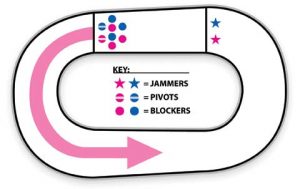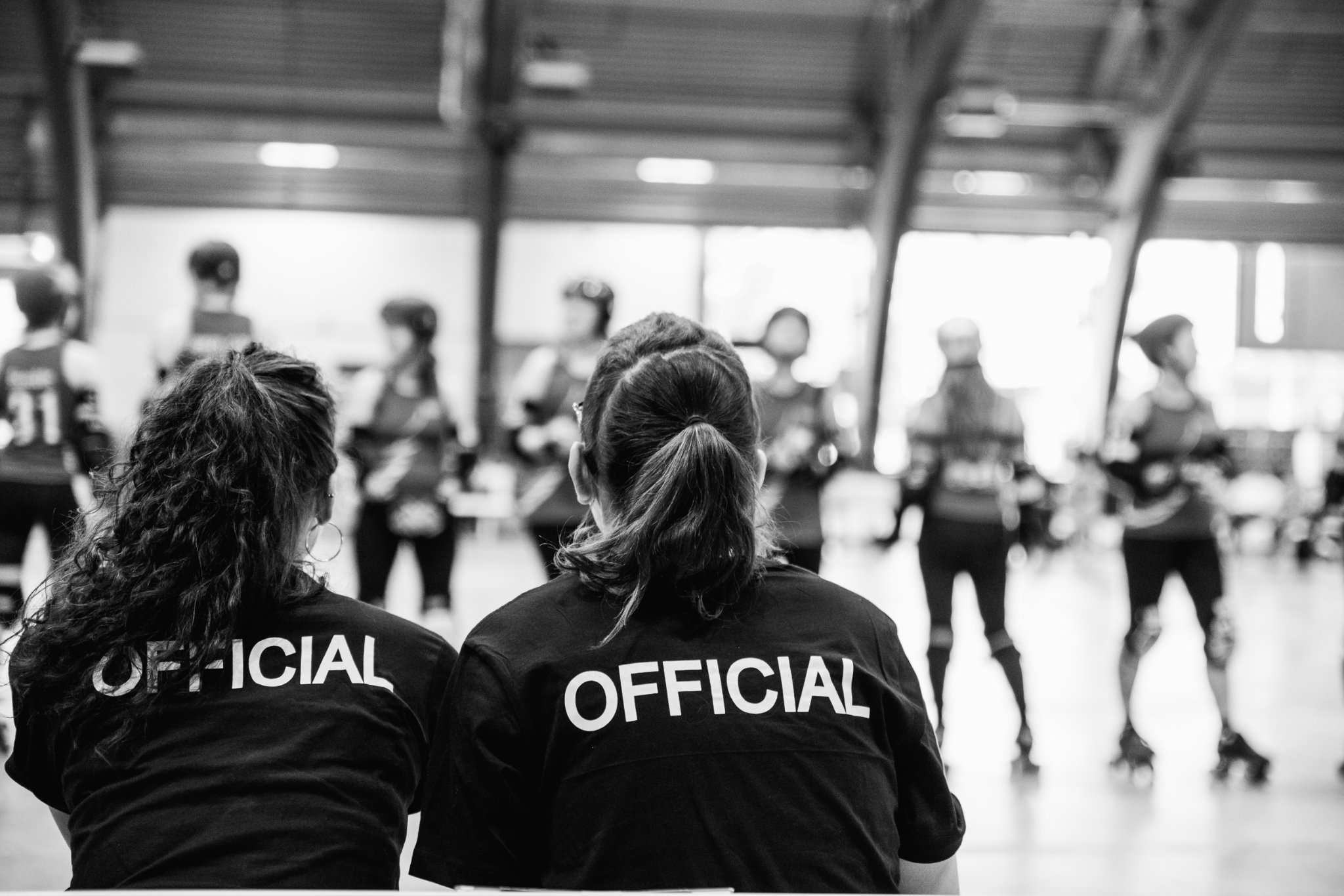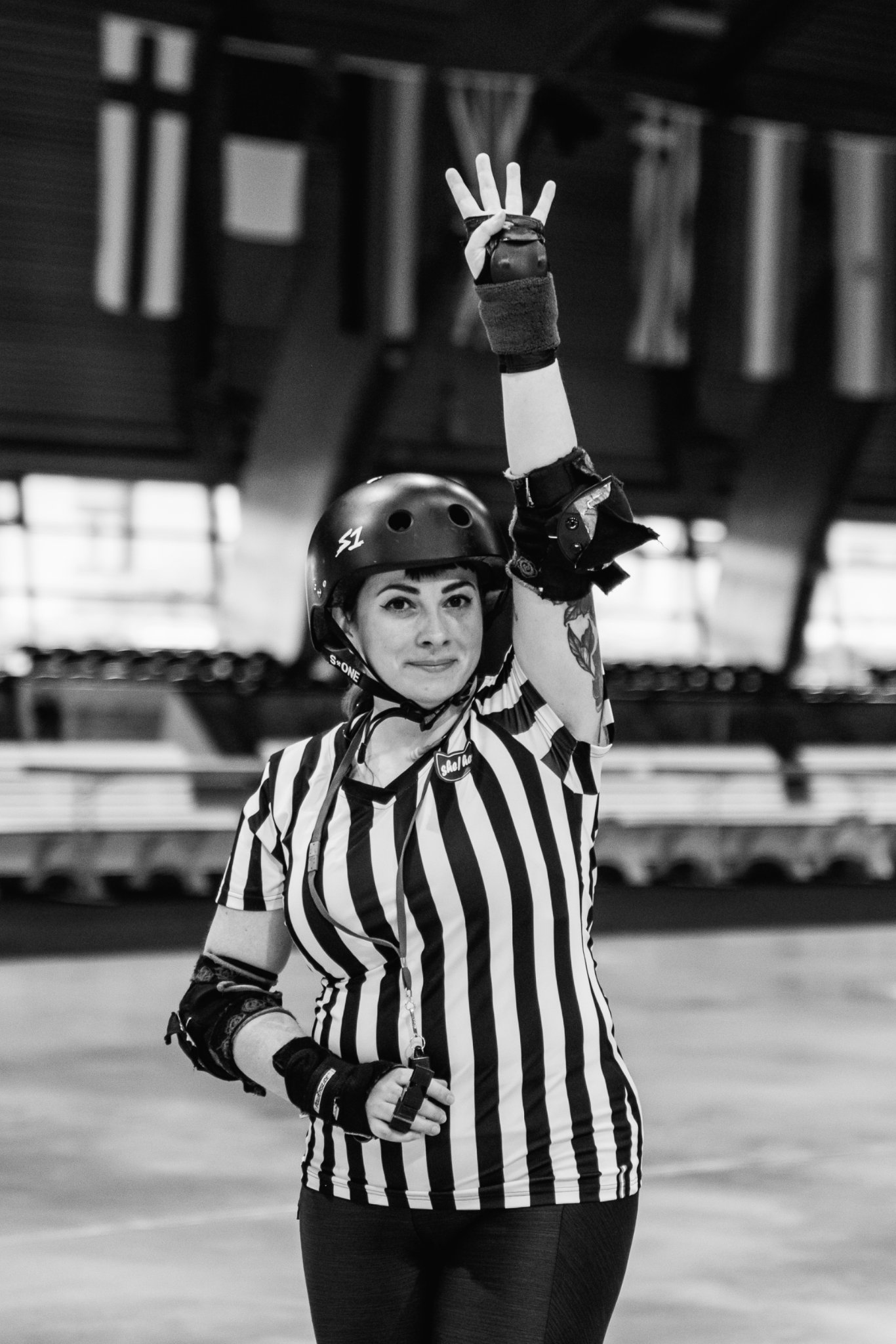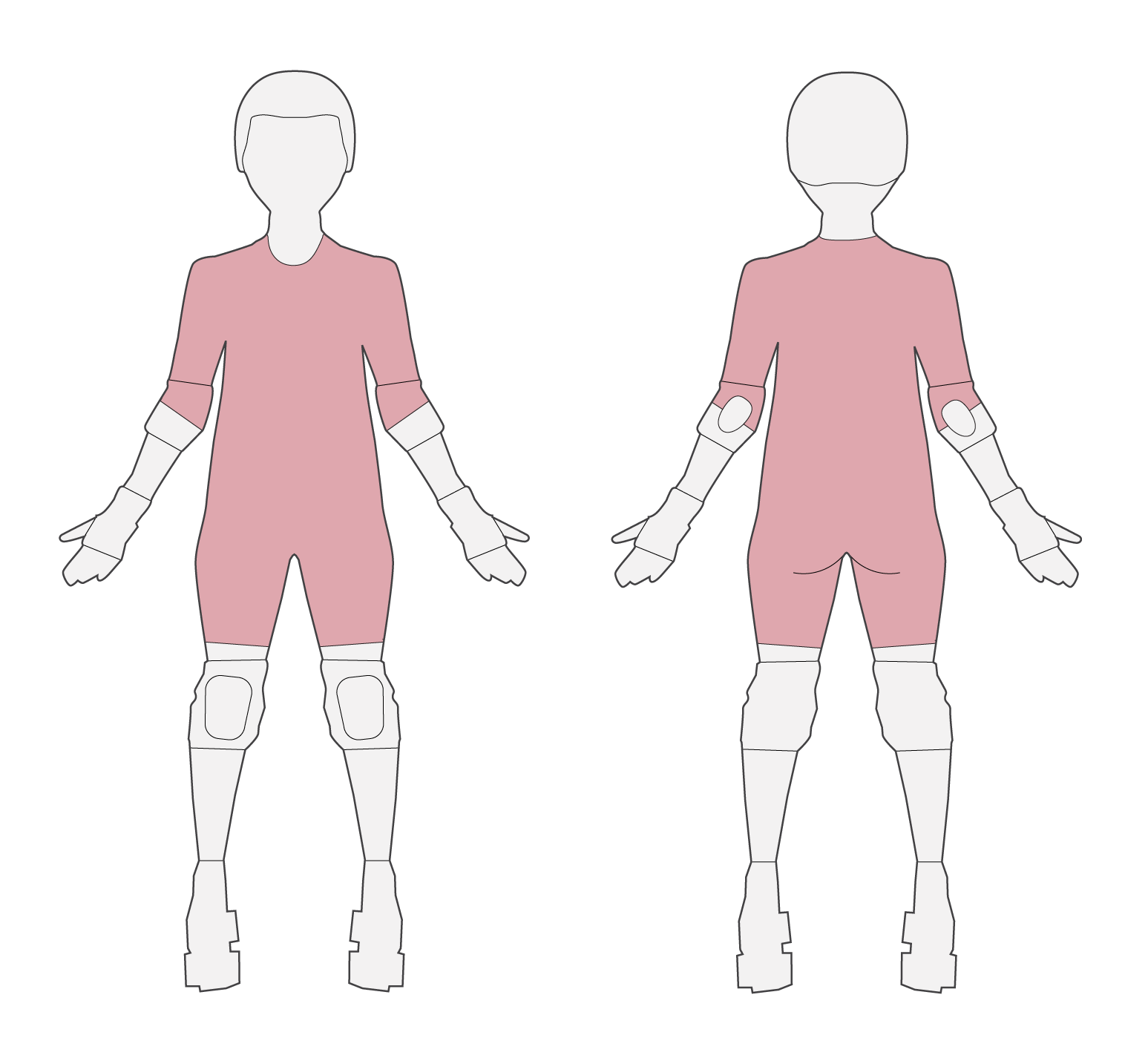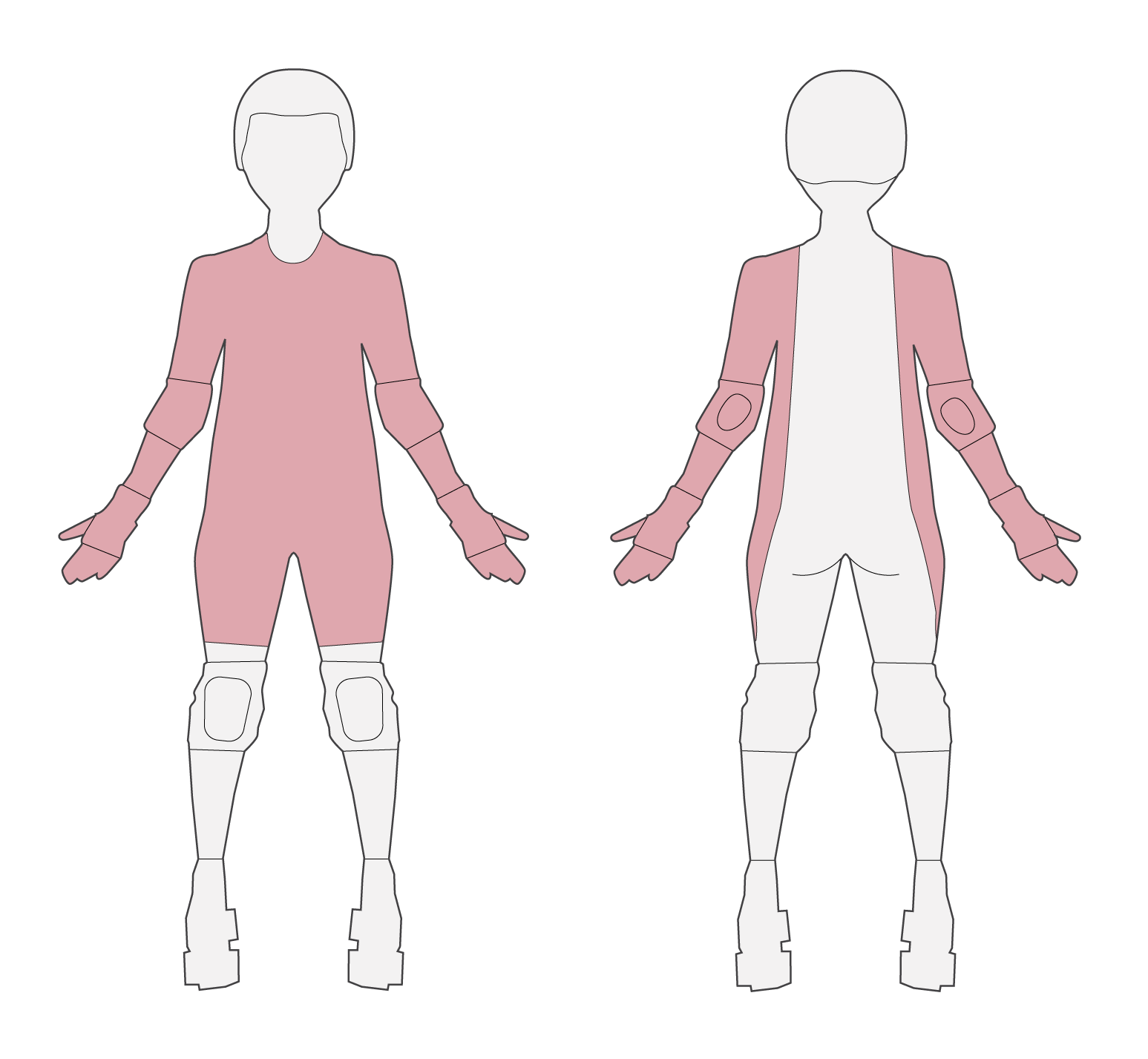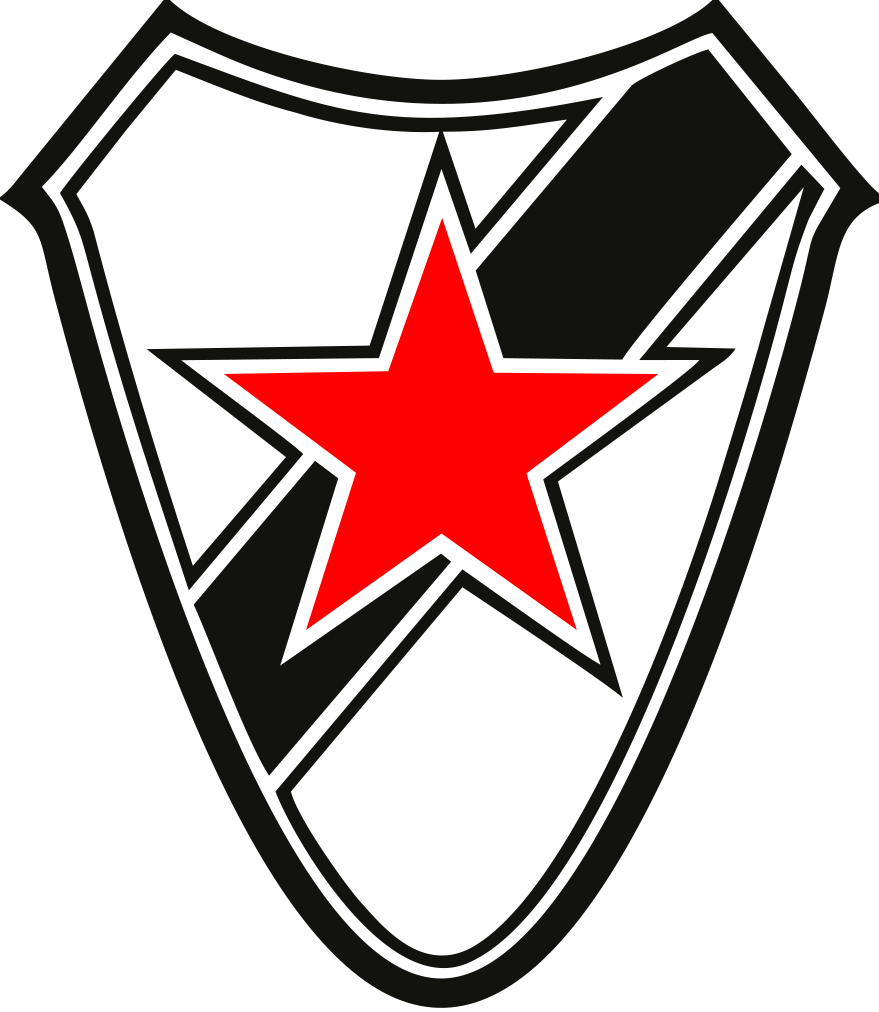Being part of the Roller Derby community doesn’t always mean being a player on the track: Our team also relies heavily on dedicated referees. In a Roller Derby bout, it is the referees’ job to ensure that the game runs as fairly and smoothly as possible. There are two types of referees: Skating Officials (SOs) and Non-Skating Officials (NSOs). Typically, three to eight SOs officiate a bout, skating around the infield and outfield. The main responsibilities of the SOs include issuing penalties, awarding points, and, very importantly, ensuring fair play. SOs traditionally wear black-and-white striped jerseys, which is why they are also referred to as “zebras.”
The tasks of the NSOs are also quite diverse. They do not skate and are positioned around and outside the playing field. Among other duties, they start and time jams, record penalties, stop the clock for players in the penalty box, and inform the teams of the score using the scoreboard. NSOs often wore pink, which is why they were called “flamingos.” Nowadays, the usual color for NSOs is black.
We offer training and practice opportunities for our referees. Interested individuals can participate in our beginner training sessions, where the basics of skating and the game are taught. During internal scrimmages, they can demonstrate their knowledge and provide players with feedback for smooth gameplay. Additionally, we also try to organize boot camps specifically for SOs and NSOs. Referees are full members of our team. They can participate in decision-making processes and projects and engage in various working groups.
As a referee, there are also many opportunities to connect with the national and international community and gain experience at bouts and games outside of the home league. In general, our team is always looking for SOs and NSOs who are interested in becoming part of our team.
